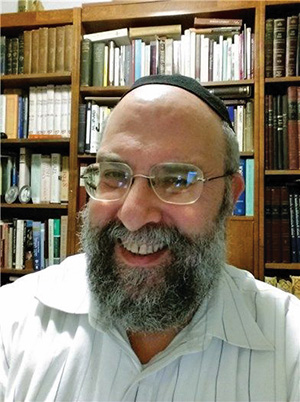
We are all familiar with the mishna in Arvei Pesachim recited at the Seder:
.רבן גמליאל היה אומר, כל שלא אמר שלשה דברים אלו בפסח, לא יצא ידי חובתו, ואלו הן, פסח, מצה, ומרור
.פסח, על שום שפסח המקום על בתי אבותינו במצרים
.מצה, על שום שנגאלו אבותינו במצרים
.מרור, על שום שמררו המצרים את חיי אבותינו במצרים
On its face, the mishna seems to mean that explication of the symbols of the Seder night is a mandatory part of each mitzvah, and that failure to explain, for example, why we eat matzah on the night of Pesach nullifies our act of eating matzah.
If we think about it, however, we realize how extraordinary a requirement this is. For while there is a general halachic principle of mitzvot tzrichot kavana (mitzvot require intention), that principle is generally understood to require only that we intend to fulfill the mitzvah. Nowhere do we find a requirement to explain the reason behind a mitzvah.
Some Rishonim, no doubt troubled by this question, interpret the mishna as pertaining not to the mitzvot of Pesach, matzah and maror, but to the obligation of sipur yetziat Mitzrayim. Among these Rishonim is the Ran who, interestingly, limits Rabban Gamliel’s halacha to the status of mitzvah min hamuvchar (the most preferable manner to perform a mitzvah). The Rama, in Darchei Moshe, his gloss on the Tur, quotes the Ran to that effect, although the Tur himself does not mention Rabban Gamliel’s halacha, which is not cited at all by either the Mechaber or the Rama in Shulchan Aruch.
Other Rishonim understand Rabban Gamliel to be addressing the requirements of the mitzvot of Pesach, matzah and maror, seemingly in accordance with the mishna’s plain meaning, with some treating it as an absolute requirement. This seems to be the opinion of the Rashbam and the Orchot Chaim, as well as the Abudraham, who writes, “Af al pi she’achal Pesach, matzah u’maror lo yatza y’dei chovato im lo yomar shelosha devarim eilu lama heim ba’im.” (Despite having eating Pesach, matzah and maror, he has not fulfilled his obligation unless he asks about these three items.)
Which brings us back to our original question: Why did Rabban Gamliel institute this apparently unique requirement?
To answer this question, we must begin by identifying the Rabban Gamliel of our mishna. Almost certainly, it was Rabban Gamliel d’Yavneh, who succeeded to the office of nasi in approximately 80 C.E. and, in the aftermath of the Churban Bayit Sheni, was instrumental in consolidating the primacy of Torah She’ba’al Peh and strengthening the new center of national life at Yavneh. Of greater relevance to our inquiry was his alarm at the danger posed by early Judeo-Christians, and sought to drive a wedge between traditional Judaism and the nascent messianic movement. It was that concern, I believe, that underlay two of Rabban Gamliel’s enactments: his determination of the final version of the Amidah, and the halacha recorded in our mishna.
The former, of course, is more widely known, probably because of the peculiarity of the Amidah, comprised of 19 brachot, being known popularly as the Shemoneh Esrei. The Gemara in Masechet Brachot 29 describes how Rabban Gamliel added a 19th bracha, Birkat Haminim, calling down God’s wrath upon Christians. The new bracha was clearly intended to make it impossible for Jews and early Christians to pray together, thereby forcing Christians out of the synagogue.
It requires a very small leap of imagination to assume that Rabban Gamliel would be equally concerned with another occasion at which Jews and Christians came together to share the same rites and liturgy: the night of the Seder. As Louis H. Feldman notes in “Jew and Gentile in the Ancient World,” “the Jewish Passover seems to have had an attraction for Christians, perhaps because it was, according to the Gospels, the occasion for Jesus’ Last Supper.” But that attraction came with a sinister side to it: the attempt to co-opt the Jewish symbols of the Seder night, beginning with the Korban Pesach, and reinterpret them in line with Christian beliefs. “Christians,” explains Jeremy Cohen in “Christ Killers,” “often refer to Jesus as Agnus Dei, the Lamb of God, because the founders of Christianity understood the Crucifixion as their messiah’s fulfillment of the ancient Passover sacrifice.” The Korban Pesach thus became a symbol for Jesus, while the matzah became the basis for the Eucharist, the sacrament that sees Jesus’ flesh embodied in a piece of unleavened bread, and the maror became the symbol of his suffering on the cross. It is reasonable to assume, therefore, that the same concern that led Rabban Gamliel to be metaken (establish) the Birkat Haminim impelled him to insist that no Jew could fulfill the mitzvot of leil haPesach without explicitly declaring that the symbols of the chag retained their Jewish—and not their new, Christian—meanings.
It is interesting to note that this concern for maintaining the religious meaning of the Pesach rituals later became a concern for Christians as well—so much so that in 341 C.E. the Council of Antioch passed legislation prohibiting Christians from dining with Jews on Pesach. We can perhaps speculate that, absent the takana of Rabban Gamliel, early Christians might have succeeded in perverting the original meanings of the Pesach symbols, obviating the need for Christians to introduce their own separatist legislation.
Today, when googling “Christian Seder” pulls up thousands of sites, we would do well to acknowledge Rabban Gamliel for his foresight in ensuring that Christians feel compelled to use that adjective—and their own websites.
By Michael Pariser
Michael Pariser has taught Talmud, Tanach, literature and writing for over fifteen years, and is currently teaching at Touro’s Mesivta Yesodei Yeshurun in Queens.










